Abstract
To facilitate predictions of the transport and fate of contaminants at future coal conversion facilities, rates of microbial transformation of polycyclic aromatic hydrocarbons were measured in stream water and sediment samples collected in the vicinity of a coal-coking treated wastewater discharge from November 1977 through August 1979. Six radiolabeled polycyclic aromatic hydrocarbons were incubated with sediment and water samples; 14CO2, cell-bound 14C, and polar transformation products were isolated and quantified. Whereas 14CO2 and bound 14C were major transformation products in sediment assays, soluble polar 14C dominated transformation in water samples. Mean rate constants (measured at 20°C) in sediments collected downstream from the effluent outfall were 7.8 × 10−2 h−1 (naphthalene), 1.6 × 10−2 h−1 (anthracene), and 3.3 × 10−3 h−1 [benz(a)anthracene], which corresponded to turnover times of 13, 62, and 300 h, respectively. No unequivocal evidence for transformation of benzo(a)pyrene or dibenz(a,h)anthracene was obtained. Only naphthalene and anthracene transformations were observed in water samples; rate constants were consistently 5- and 20-fold lower, respectively, than in the corresponding sediment samples. The measured rate constants for anthracene transformation in July 1978 sediment samples were not related to total heterotroph numbers. In late July 1978, the effluent was diverted from the primary study area; however, no differences were observed either in transformation rate constants or in the downstream/upstream sediment rate constant ratio. These results are consistent with the hypothesis that continuous inputs of polycyclic aromatic hydrocarbons result in an increased ability within a microbial community to utilize certain polycyclic aromatic hydrocarbons. However, because transformation rates remained elevated for more than 1 year after removal of the polycyclic aromatic hydrocarbon source, microbial communities may shift only slowly in response to changes in polycyclic aromatic hydrocarbon concentrations.
Full text
PDF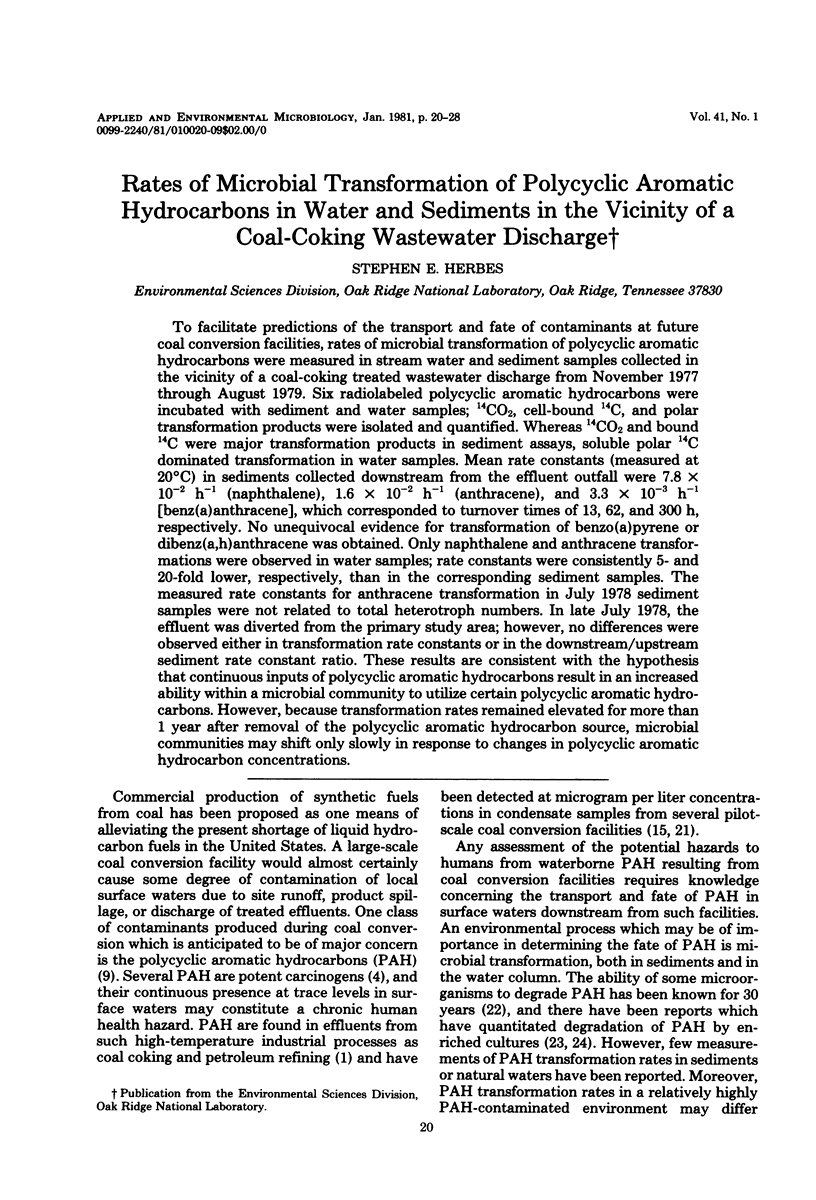

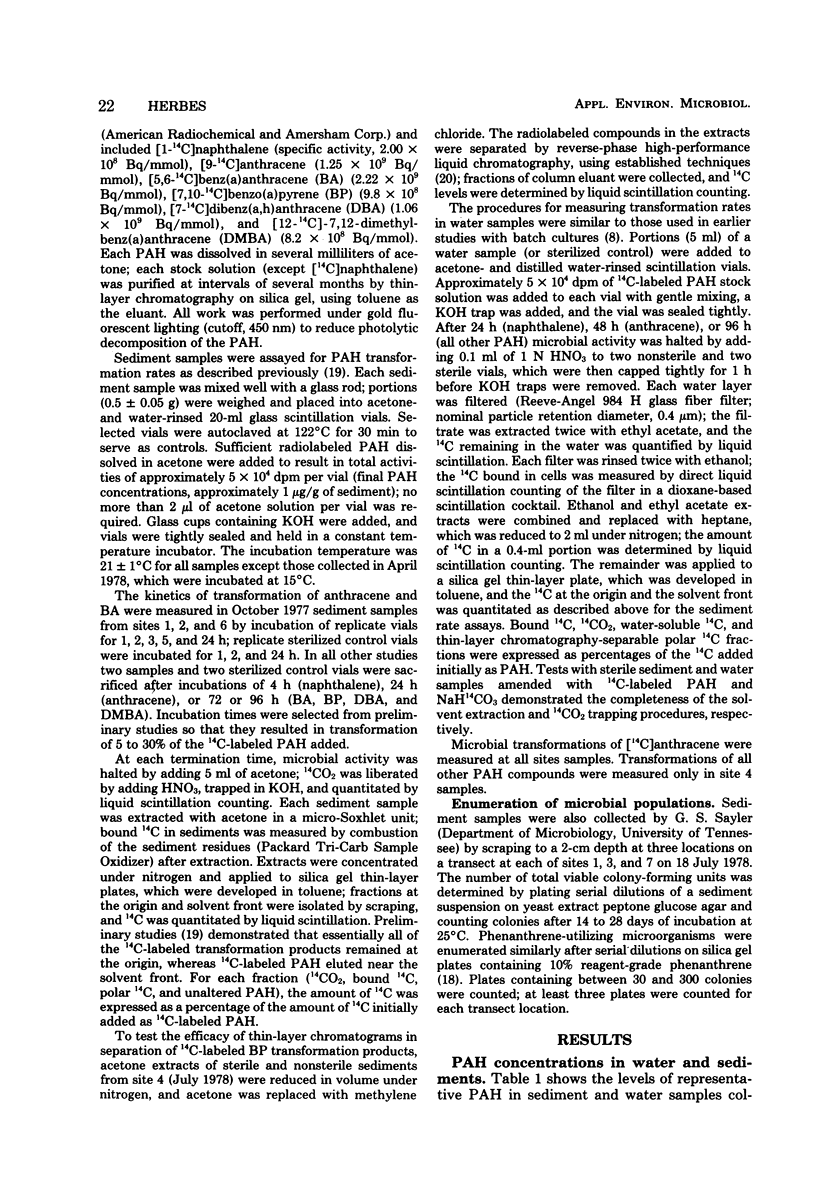
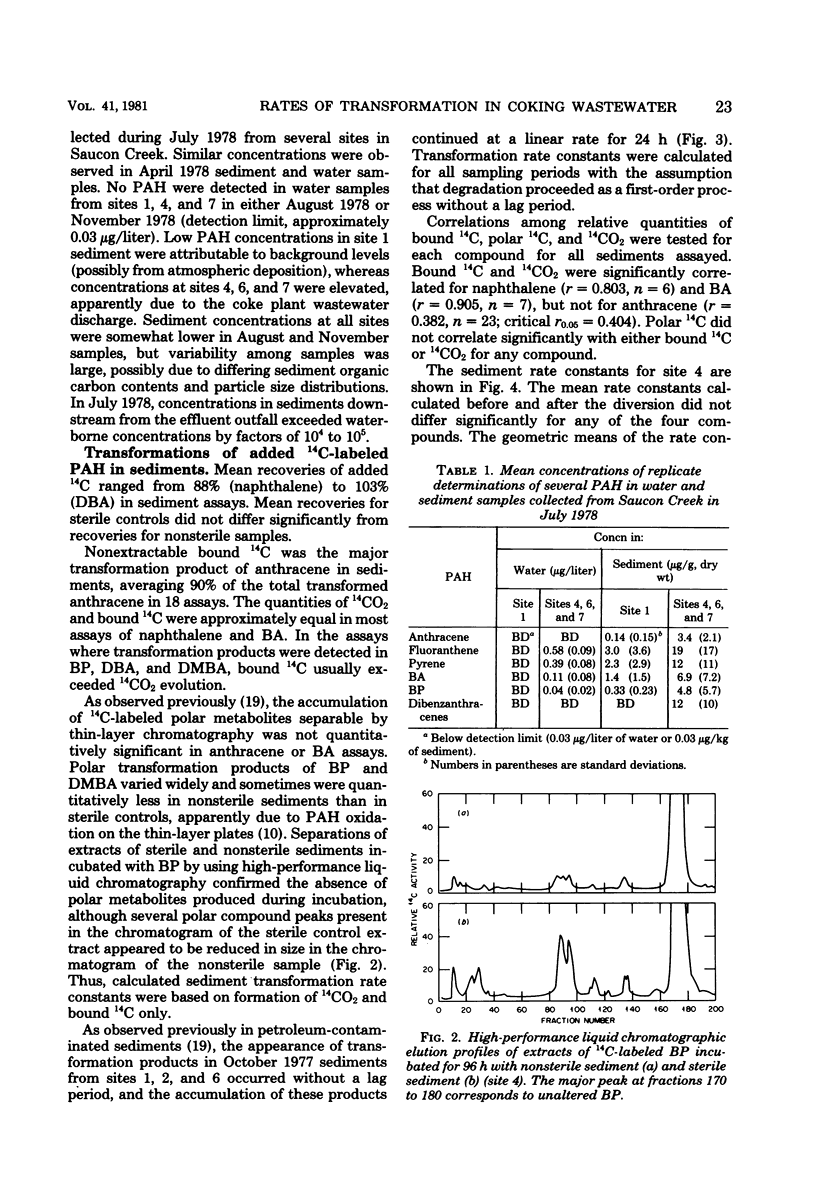
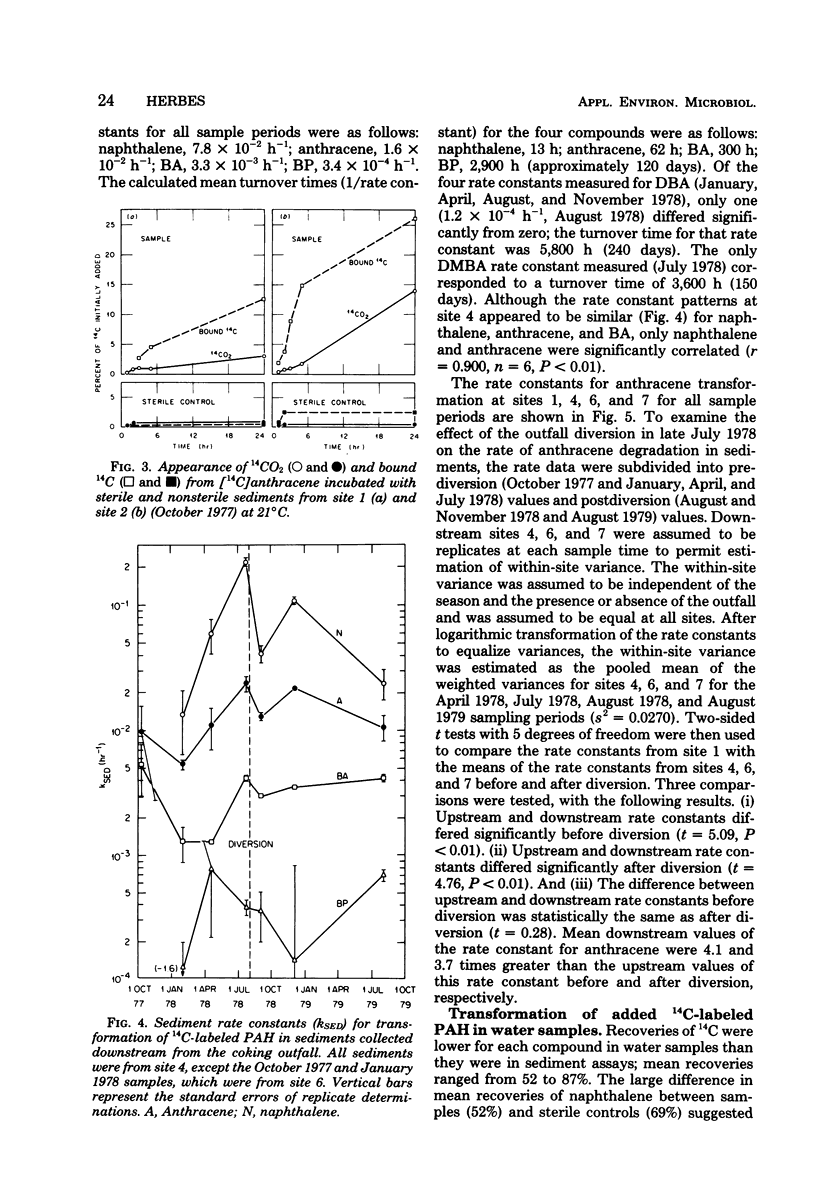
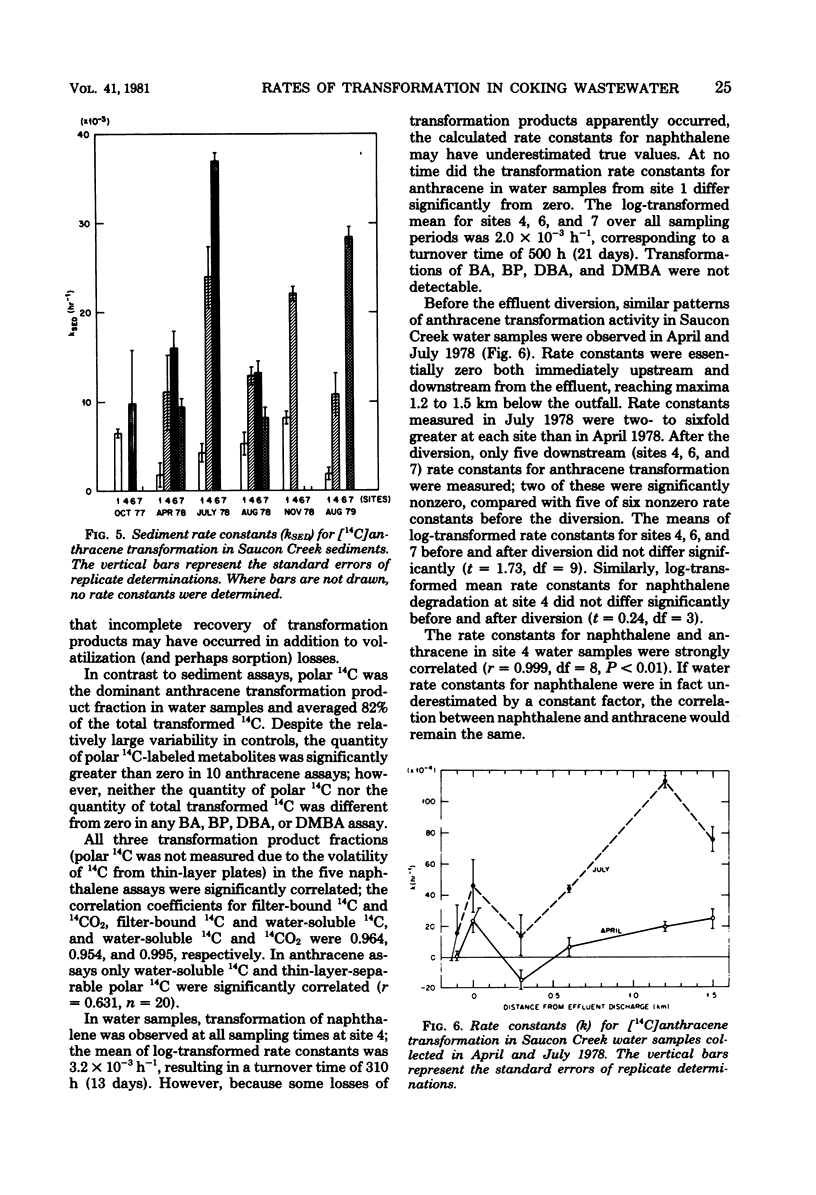
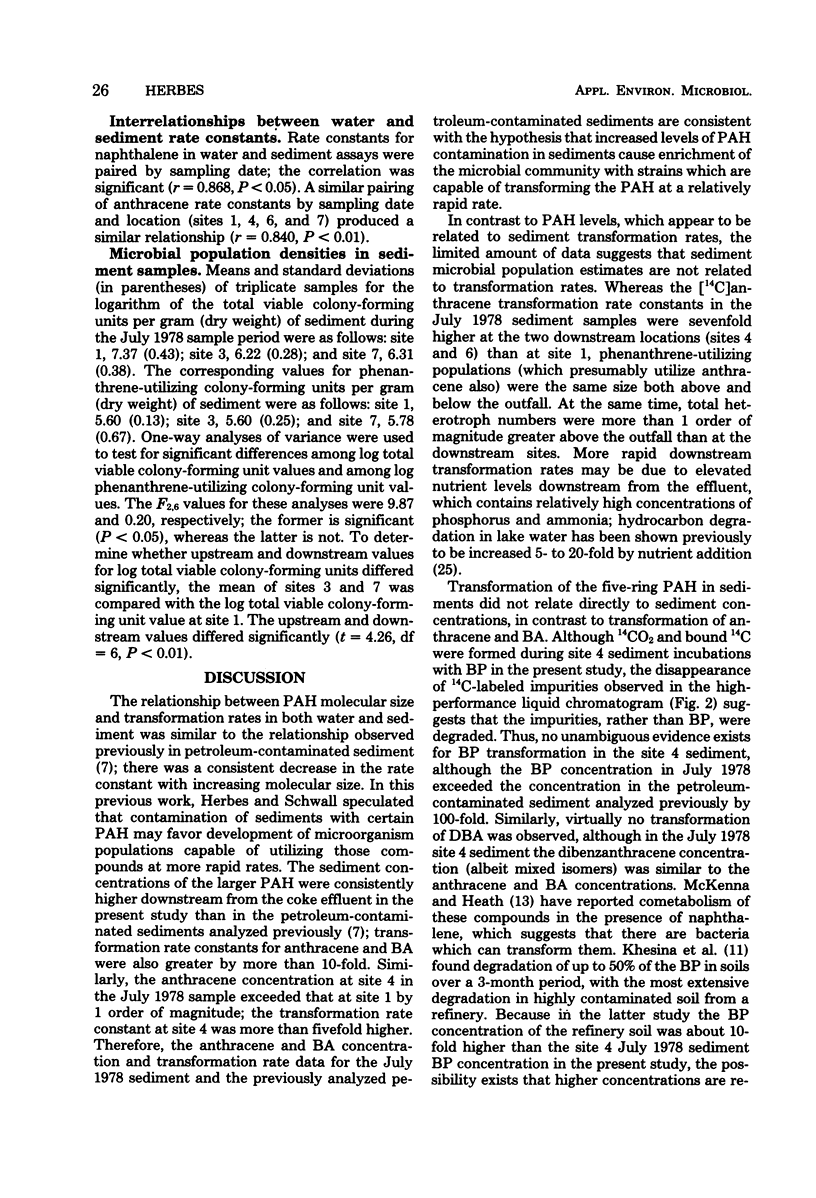
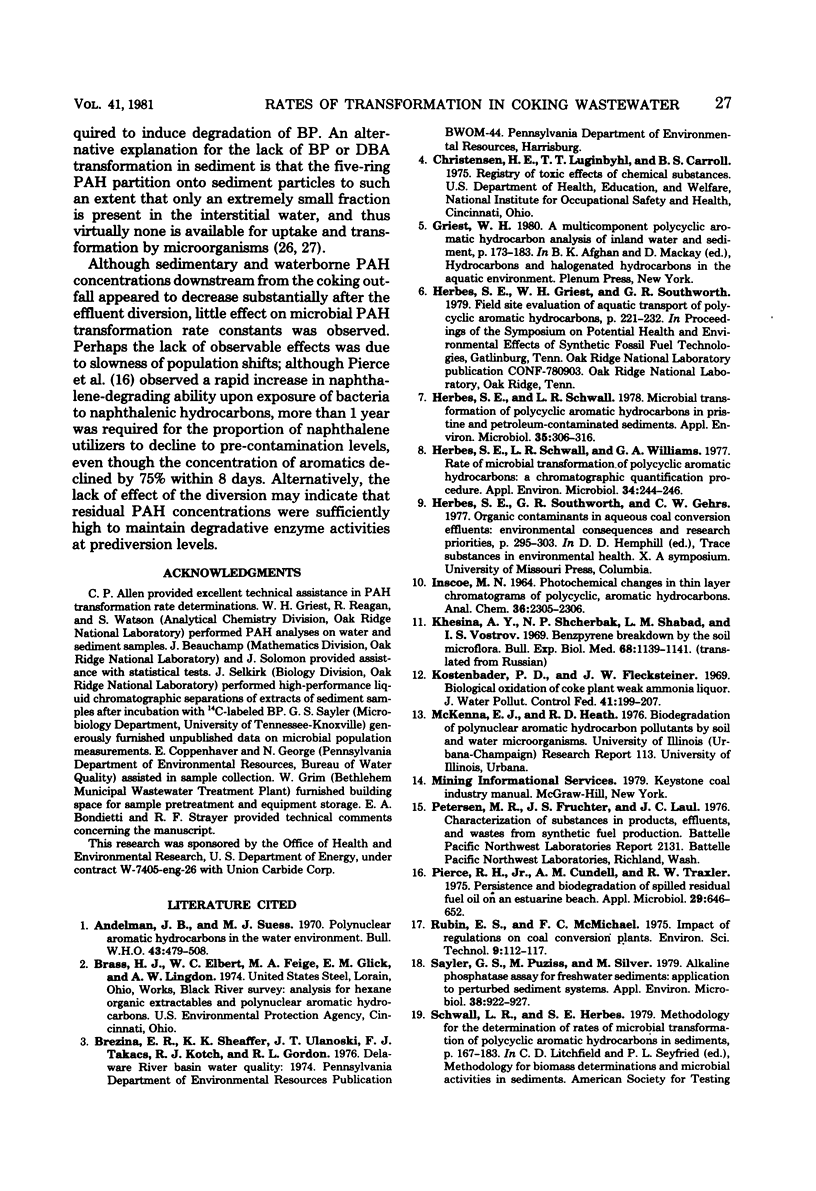

Selected References
These references are in PubMed. This may not be the complete list of references from this article.
- Andelman J. B., Suess M. J. Polynuclear aromatic hydrocarbons in the water environment. Bull World Health Organ. 1970;43(3):479–508. [PMC free article] [PubMed] [Google Scholar]
- Herbes S. E., Schwall L. R. Microbial transformation of polycyclic aromatic hydrocarbons in pristine and petroleum-contaminated sediments. Appl Environ Microbiol. 1978 Feb;35(2):306–316. doi: 10.1128/aem.35.2.306-316.1978. [DOI] [PMC free article] [PubMed] [Google Scholar]
- Herbes S. E., Schwall L. R., Williams G. A. Rate of microbial transformation of polycyclic aromatic hydrocarbons: a chromatographic quantification procedure. Appl Environ Microbiol. 1977 Aug;34(2):244–246. doi: 10.1128/aem.34.2.244-246.1977. [DOI] [PMC free article] [PubMed] [Google Scholar]
- Pierce R. H., Jr, Cundell A. M., Traxler R. W. Persistence and biodegradation of spilled residual fuel oil on an estuarine beach. Appl Microbiol. 1975 May;29(5):646–652. doi: 10.1128/am.29.5.646-652.1975. [DOI] [PMC free article] [PubMed] [Google Scholar]
- Sayler G. S., Puziss M., Silver M. Alkaline phosphatase assay for freshwater sediments: application to perturbed sediment systems. Appl Environ Microbiol. 1979 Nov;38(5):922–927. doi: 10.1128/aem.38.5.922-927.1979. [DOI] [PMC free article] [PubMed] [Google Scholar]
- Selkirk J. K., Croy R. G., Gelboin H. V. Benzo(a)pyrene metabolites: efficient and rapid separation by high-pressure liquid chromatography. Science. 1974 Apr 12;184(4133):169–171. doi: 10.1126/science.184.4133.169. [DOI] [PubMed] [Google Scholar]
- Sisler F. D., Zobell C. E. Microbial Utilization of Carcinogenic Hydrocarbons. Science. 1947 Nov 28;106(2761):521–522. doi: 10.1126/science.106.2761.521. [DOI] [PubMed] [Google Scholar]
- Walker J. D., Colwell R. R., Petrakis L. Evaluation of petroleum-degrading potential of bacteria from water and sediment. Appl Microbiol. 1975 Dec;30(6):1036–1039. doi: 10.1128/am.30.6.1036-1039.1975. [DOI] [PMC free article] [PubMed] [Google Scholar]
- Ward D. M., Brock T. D. Environmental factors influencing the rate of hydrocarbon oxidation in temperate lakes. Appl Environ Microbiol. 1976 May;31(5):764–772. doi: 10.1128/aem.31.5.764-772.1976. [DOI] [PMC free article] [PubMed] [Google Scholar]
- Wodzinski R. S., Bertolini D. Physical state in which naphthalene and bibenzyl are utilized by bacteria. Appl Microbiol. 1972 Jun;23(6):1077–1081. doi: 10.1128/am.23.6.1077-1081.1972. [DOI] [PMC free article] [PubMed] [Google Scholar]
- Wodzinski R. S., Coyle J. E. Physical state of phenanthrene for utilization by bacteria. Appl Microbiol. 1974 Jun;27(6):1081–1084. doi: 10.1128/am.27.6.1081-1084.1974. [DOI] [PMC free article] [PubMed] [Google Scholar]


